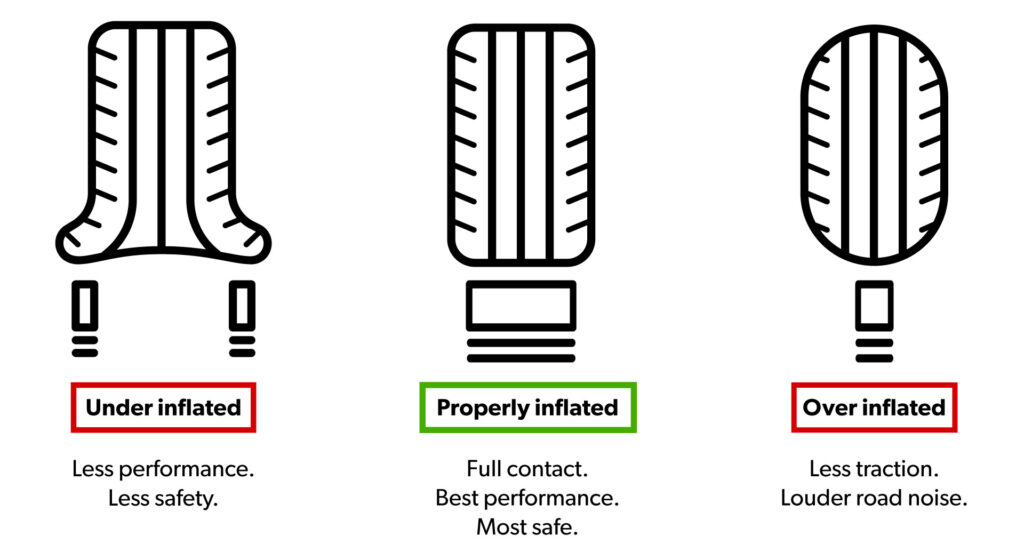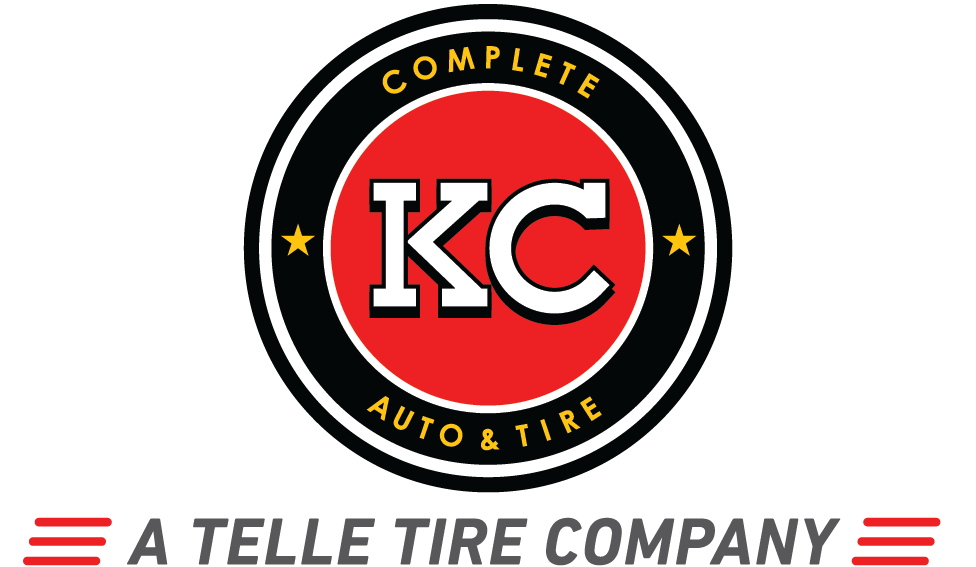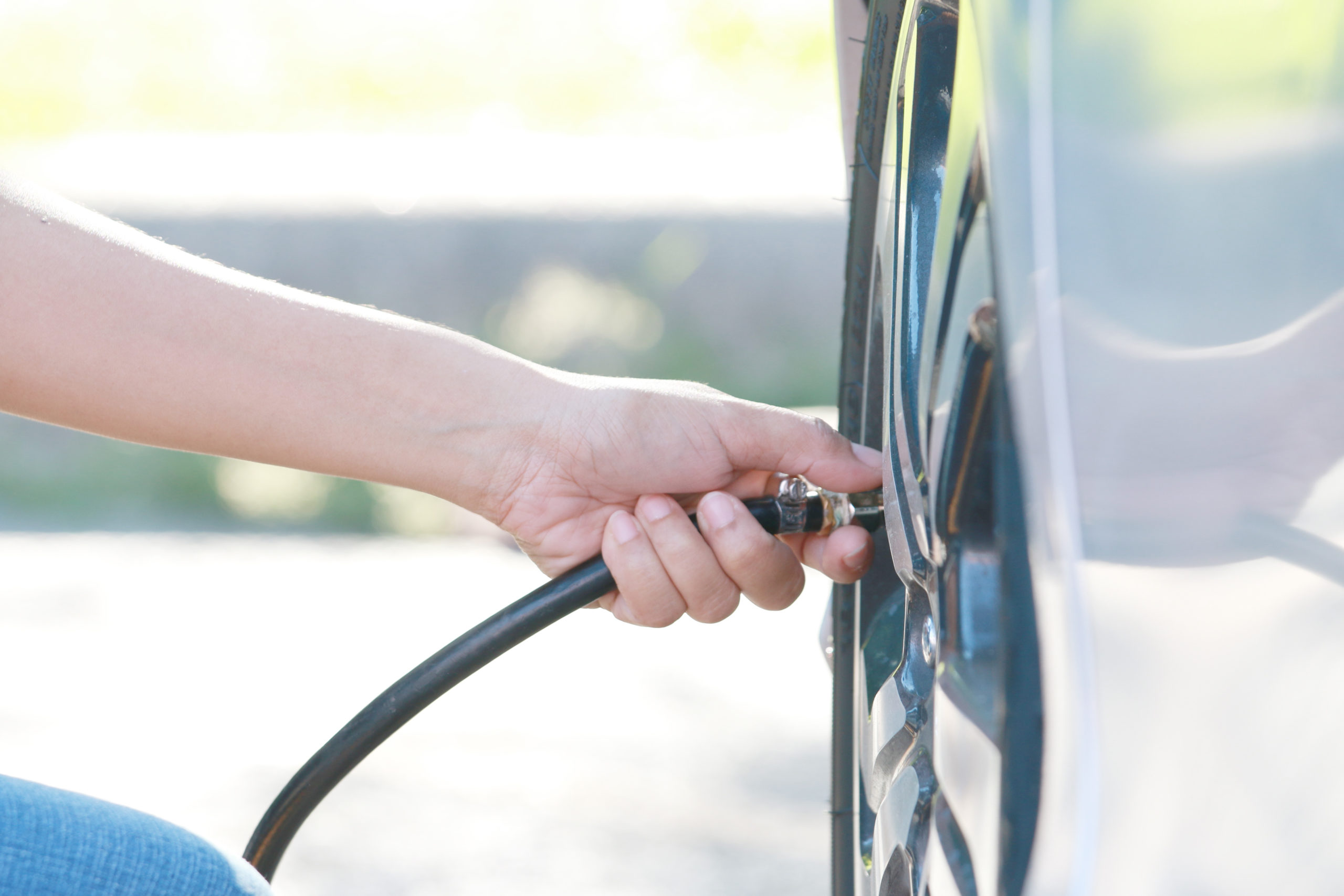I Overinflated My Tires – Is My Safety at Risk?
It’s no question that air inside tires is a good thing, but when there’s too much, it can actually end up causing issues for your vehicle. Overinflated tires can happen due to a variety of reasons, particularly in colder temperatures when tires appear to need to be inflated in the morning, you fill them to the recommended tire pressure, then by afternoon, your tires end up having too much air as temperatures warm – unless you know how to take air out of a tire. So, what exactly can overinflated tires do to a vehicle and how do you prevent or correct the issue? Having your tires checked at a professional tire and auto center can ensure your car, truck, or SUV keeps rolling safely – and on your manufacturer’s recommended tire pressure.
What Exactly Qualifies as “Overinflated?”
When we say “over-inflated,” what do we mean? Yes, in general, it’s too much air, but how do you know what is actually too much? Newer tires these days come with a maximum inflation pressure which would indicate how much air pressure the tire itself can handle, whether on a vehicle or not. When you’re actually inflating the tire on a vehicle, you need to follow the recommended tire pressure for the vehicle because the tire’s maximum inflation pressure is typically going to be way higher than you actually need for safe driving.
Your vehicle’s recommended tire PSI will be listed on your vehicle, typically just inside the driver’s side door, but it should also be available in your owner’s manual. Depending on your vehicle, the tire pressure may also be different for the front and back tires, so don’t simply assume they’re all the same. If you drive a vehicle with towing capabilities, you may also require higher tire pressure when hauling a load as opposed to when you’re simply commuting.
The tires on your vehicle won’t be considered dangerously overinflated at just a few PSI over your manufacturer’s recommended tire pressure, but much higher than that can start putting your vehicle – and your safety – at risk.

How Bad is Overinflation?
When tires are truly overinflated, it can be detrimental to your vehicle’s safety and end up causing expensive damage to your tires. In short, overinflation is pretty bad. Below, we break down what exactly could happen when rolling on overinflated tires.
Safety Risks
One of the biggest risks with overinflated tires is experiencing a blowout. Tire blowouts can easily cause you to lose control of your vehicle and make it much harder to brake within a shorter distance, not only posing a safety threat to yourself but to others on the road, as well.
In addition to the risks of a tire blowout, the safety features on your vehicle, mainly the anti-lock braking system, are designed to work with your manufacturer’s recommended tire pressure. If your tires are overinflated, this and other driver assistance functions won’t work as intended, making your car a high safety risk.
Excessive Tire Damage and Tread Wear
Overinflating tires makes them more stiff and inflexible. When you encounter anything on the road, like potholes, curbs, or debris, you have a higher chance of getting tire damage because of it. They’ll also make your vehicle’s ride much more uncomfortable – you’re sure to feel every bump in the road.
Your tires will also wear out quicker. The high air pressure will distort the tire’s shape, allowing only the middle of the tire to touch the road and focusing the wear down the center. While quickly worn tires are a serious problem, the distorted shape can also cause a decrease in traction, again making it a danger to drive.
How to Take Air Out of a Tire
If you discover your tires are overinflated, don’t panic. First and foremost, check for any excessive wear or damage. If you find any, it may be best to replace them to ensure your vehicle’s safety. If they still appear to be in good shape, it’s quite easy to remove the excess air. Here’s how to take air out of a tire correctly and safely:
- Remove the valve cap from the stem on the tire to expose the metal pin.
- If you have an air pressure tool, the back is equipped with a small piece specifically designed for releasing air pressure. Press down firmly on the pin of the valve using this tool, or another similar item, to release air.
- As you continue releasing pressure, check the tire’s PSI to monitor the level and ensure you don’t let out too much.
Once you’re done, set yourself a reminder to check your vehicle’s tire pressure regularly. Your tires will naturally lose some pressure, even small amounts on a daily basis. You may need to top off your tire pressure every few months or so (possibly more in winter). However, if you find yourself having to fill your tires fairly often, you may have a small hole or leak that will need to be repaired right away. When you’re checking your tire pressure, don’t forget to check your vehicle’s spare tire – nothing will be more inconvenient than getting a flat on the side of the road and finding a flat spare when you go to replace it!
Avoid Tire Mishaps with the Experts at Telle Tire
Keeping your vehicle safe on the road and ensuring your tires wear at the rate they should can be as simple as ensuring you keep the proper tire PSI and understanding how to take air out of a tire should the need arise. Trust the pros at Telle Tire to ensure your tires are inflated to the right PSI, whether you visit us for repairs, routine maintenance, or new tire installation. Reach out with any of your tire or automotive questions, and visit a location near you.


